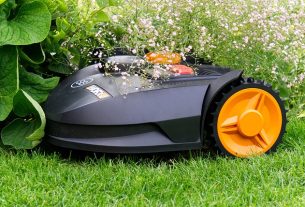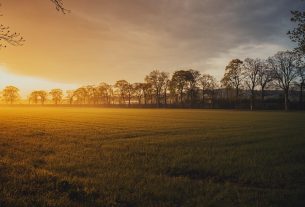Lawn care and landscaping practices have evolved to emphasize sustainability, conservation of natural resources, and ecological balance. Integrating sustainable lawn care with landscape design enhances both the visual appeal and health of turf areas while respecting the environment. Key strategies include selecting appropriate grass varieties for local climates, using water-efficient irrigation systems, and implementing aeration and overseeding to maintain soil health. Fertilization is optimized to align with natural growth cycles, and pest management is integrated with environmental safety in mind. Advanced materials like recycled plastics and reclaimed wood composites are used for hardscapes, contributing to longevity and resource conservation. Smart irrigation systems conserve water by responding to moisture levels and weather forecasts. Drought-resistant turf varieties and innovative drainage systems further promote environmental sustainability. Green roofing and xeriscaping offer aesthetically pleasing solutions that minimize water use, while permeable pavers and natural alternatives to traditional turf support multifunctional outdoor spaces. These eco-focused landscaping approaches aim to create healthy, beautiful outdoor environments that support local ecosystems, biodiversity, and a responsible relationship with nature. The use of indigenous plant species, composting, and organic matter over chemical fertilizers and pesticides not only benefit soil health but also contribute to the well-being of wildlife, enhancing the ecological value of our outdoor spaces.
Exploring the art of landscape design, this comprehensive guide delves into the nuances of integrating effective lawn care within design frameworks, showcasing best practices that elevate any outdoor space. We’ll traverse the innovative frontier of modern landscaping, highlighting cutting-edge materials and techniques that promise both aesthetic appeal and functionality. Additionally, we’ll focus on sustainable landscape designs, emphasizing eco-friendly plant selection and practices that contribute to a greener planet. Join us as we transform your yard into a living masterpiece through the fusion of lawn care and landscaping expertise.
- Best Practices for Effective Lawn Care Integration in Landscape Design
- Innovative Materials and Techniques in Modern Landscaping Implementation
- Sustainable Practices and Plant Selection for Eco-Friendly Landscapes
Best Practices for Effective Lawn Care Integration in Landscape Design

Integrating effective lawn care into landscape design enhances both aesthetic appeal and the health of the turf. To achieve a lush, vibrant lawn that complements the overall landscape, it’s crucial to start with a thorough site analysis. This includes assessing soil conditions, sunlight exposure, and topography. Selecting the right grass variety for your local climate is a key factor in ensuring year-round beauty and resilience against pests and diseases. Implementing a well-thought-out irrigation system tailored to your lawn’s needs will conserve water and promote consistent growth. Aeration and overseeding are regular practices that help maintain soil health, reduce compacted areas, and improve nutrient uptake by grass plants. Fertilization should be strategically timed to coincide with growth patterns, ensuring that nutrients are available when needed most.
Moving beyond the basics, the integration of lawn care into landscape design extends to the harmony between hardscapes like walkways and patios and the softscapes of the turf and plantings. A well-designed landscape considers the transition zones between these elements to create a cohesive look. Edge borders can define the perimeter of the lawn, while strategic planting around the edges can provide both visual interest and natural barriers against weeds and erosion. Lawn care practices should also include integrated pest management to protect both the environment and the health of the grass. By combining these best practices with thoughtful landscape design, homeowners can enjoy a healthy, beautiful lawn that serves as a comfortable and inviting extension of their living space.
Innovative Materials and Techniques in Modern Landscaping Implementation

In the realm of modern landscaping design, innovation in materials and techniques has significantly elevated the art of outdoor space creation. The integration of sustainable and eco-friendly materials is at the forefront, with composites made from recycled plastics and reclaimed wood gaining popularity for their durability and low environmental impact. These materials not only offer a longer lifespan but also contribute to reducing waste and conserving natural resources. Smart irrigation systems have become integral in lawn care and landscaping, utilizing moisture sensors and weather forecasts to optimize water usage, thereby promoting water conservation while maintaining lush, healthy lawns. Advanced turf varieties that are drought-resistant and require less maintenance have also been introduced, ensuring beautiful outdoor spaces with reduced resource demands.
Furthermore, the advent of green roofing technologies has allowed for the integration of vegetation into urban environments, providing ecological benefits and enhancing aesthetics. Xeriscaping, a water-efficient landscaping approach, is increasingly being adopted to create beautiful gardens that require minimal water. Innovative drainage systems ensure proper water distribution, supporting both the health of the lawn and the environment. The use of permeable pavers and natural turf alternatives has also become more prevalent, offering solutions for both functional outdoor spaces and environmental stewardship. With a focus on sustainability and efficiency, modern landscaping is redefining how we interact with and care for our outdoor environments.
Sustainable Practices and Plant Selection for Eco-Friendly Landscapes

In the realm of lawn care and landscaping, sustainability has become a cornerstone practice for creating eco-friendly outdoor spaces. Landscapers now prioritize sustainable practices that not only conserve natural resources but also promote biodiversity and support local ecosystems. Selecting plant species that are indigenous to the region minimizes the need for supplemental watering and fertilization, as these plants are naturally adapted to the climate and soil conditions. Additionally, incorporating xeriscaping principles reduces water usage by designing landscapes with drought-resistant plants and proper drainage. The use of compost and organic matter enriches the soil, reducing the reliance on chemical fertilizers and pesticides, which can be harmful to both the environment and human health. By implementing these eco-conscious strategies, lawn care and landscaping practices contribute to a harmonious balance between beautiful, functional outdoor spaces and a healthy planet.
Furthermore, the selection of plants in an eco-friendly landscape is carefully curated to ensure they coexist synergistically. Choosing a variety of species that offer different ecological benefits, such as attracting pollinators or providing food for wildlife, creates a resilient and self-sustaining environment. Native plants, in particular, are often preferred due to their low maintenance requirements and their role in supporting local fauna. Integrating trees, shrubs, and perennials that provide year-round interest not only adds aesthetic value but also promotes a diverse habitat for beneficial insects, birds, and other wildlife. The thoughtful integration of these elements into lawn care and landscaping designs results in outdoor spaces that are both beautiful and environmentally responsible.
Landscaping design and implementation encompass a multifaceted approach that blends aesthetics, functionality, and ecological responsibility. By integrating best practices for lawn care into landscape designs, utilizing innovative materials and techniques, and prioritizing sustainable practices and plant selection, homeowners and professionals alike can create outdoor spaces that are both visually appealing and environmentally considerate. Adopting these strategies not only elevates the curb appeal of properties but also contributes to the health and longevity of natural habitats. Lawn Care and Landscaping thus stand at the forefront of transforming ordinary landscapes into extraordinary outdoor environments, embodying a harmonious blend of form and function.



